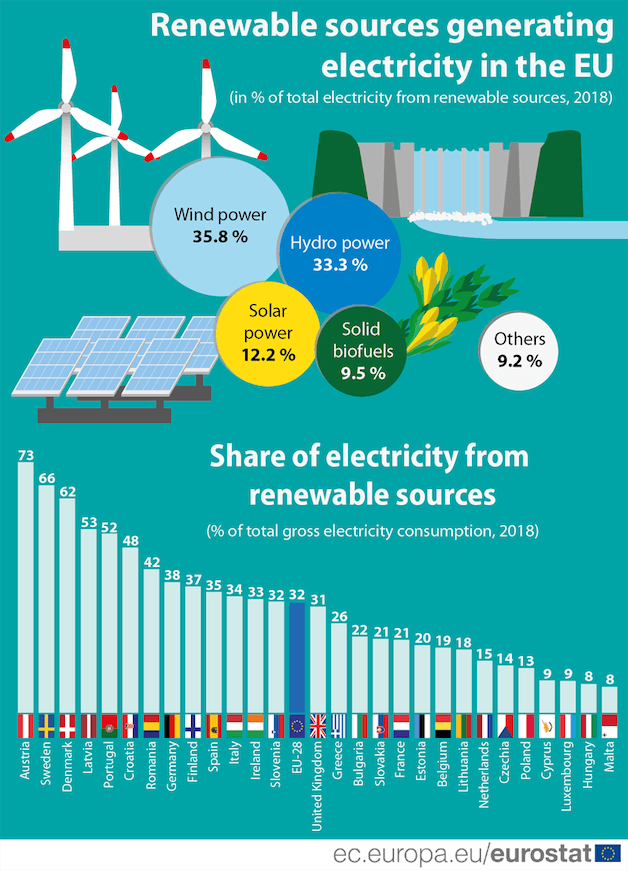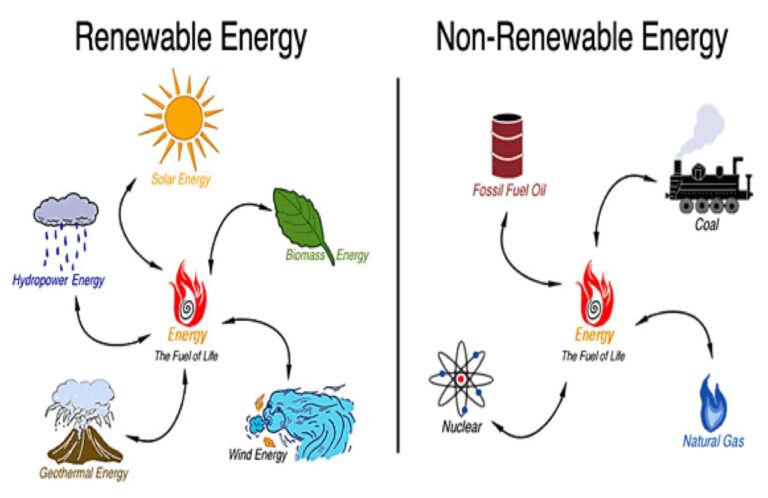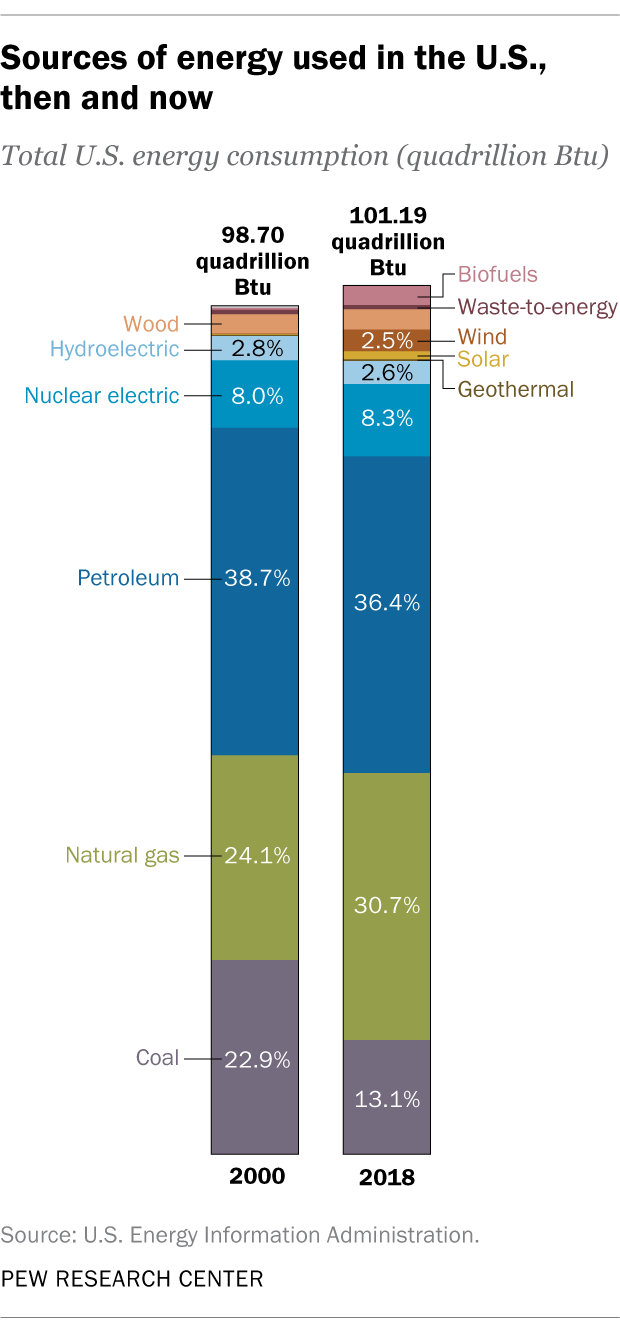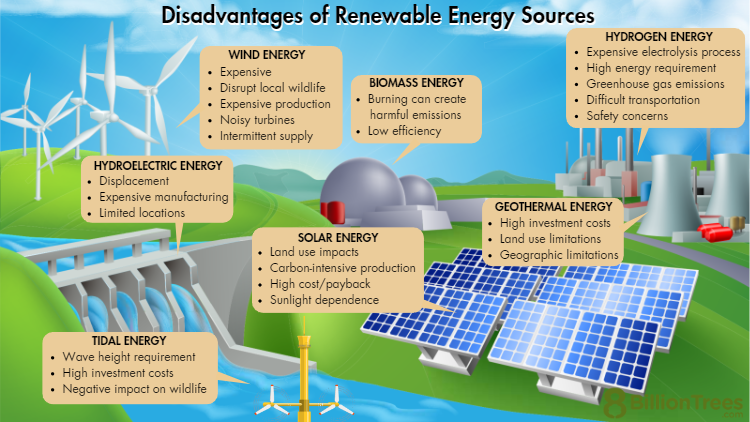Is Wood A Renewable Or Non-renewable Source Of Energy?
Is wood a renewable or non-renewable source of energy? Well, let’s delve into this fascinating topic and find out! 🌳💡
When we think of renewable energy, images of wind turbines and solar panels often come to mind. But did you know that wood has been used as a source of energy for centuries? 🌲🔥
In this article, we’ll explore whether wood can be considered a renewable or non-renewable source of energy, and uncover the surprising truth behind this natural resource. Let’s get started! 🌿🔎
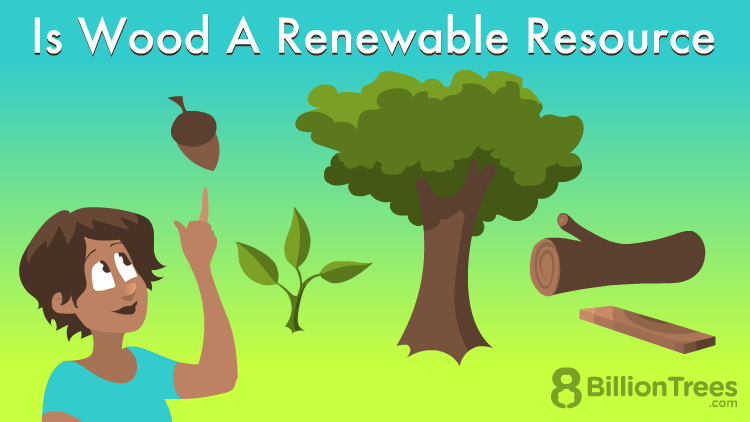
Is Wood a Renewable or Non-renewable Source of Energy?
Wood has been used as a source of energy for centuries. It is a versatile and widely available resource that can be used for heating, cooking, and power generation. However, there is an ongoing debate about whether wood is a renewable or non-renewable source of energy. In this article, we will explore the various factors that determine whether wood is considered renewable or non-renewable, as well as the environmental impacts and considerations associated with its use.
Renewability of Wood
When considering whether wood is renewable or non-renewable, it is important to understand the concept of renewability. Renewable resources are those that can be replenished within a human lifetime or relatively short timescale. Non-renewable resources, on the other hand, are finite and take millions of years to regenerate, if ever. In the case of wood, it can be classified as both renewable and non-renewable, depending on how it is sourced and managed.
Wood from sustainably managed forests can be considered a renewable resource. Sustainable forest management practices ensure that trees are harvested in a way that allows for natural regeneration and the maintenance of healthy forest ecosystems. This means that for every tree cut down, another tree is planted or allowed to grow in its place, ensuring a continuous supply of wood.
However, if wood is sourced from unsustainable practices such as illegal logging or clear-cutting, it can deplete forests and contribute to deforestation. Deforestation has severe environmental consequences, including habitat loss, soil erosion, and increased greenhouse gas emissions. In these cases, the use of wood as an energy source can be considered non-renewable because the rate of extraction exceeds the rate of regeneration.
Environmental Impacts of Wood Energy
The use of wood as a source of energy can have both positive and negative environmental impacts. On the positive side, wood is a renewable resource that can potentially replace fossil fuels, reducing greenhouse gas emissions and dependency on non-renewable sources of energy. Wood combustion also produces lower levels of air pollutants compared to other fossil fuels, making it a cleaner option for heating and power generation.
However, the environmental impacts of wood energy depend on how it is sourced and managed. If wood is harvested sustainably from well-managed forests, the environmental impacts can be minimized. Sustainable forest management practices ensure that biodiversity is protected, water resources are conserved, and ecosystems are maintained. On the other hand, if wood is obtained through unsustainable practices such as illegal logging or from endangered forests, it can have significant negative impacts on the environment.
In addition, the efficiency of wood energy systems also plays a role in determining its environmental impact. Modern, high-efficiency wood-burning stoves and boilers can significantly reduce emissions and improve energy efficiency compared to traditional open fires or outdated wood-burning appliances. Investing in efficient wood energy systems and using proper wood fuel can help minimize the environmental impacts associated with its use.
Sustainable Wood Energy Practices
To ensure that wood energy is truly renewable and environmentally friendly, it is important to promote and adopt sustainable practices. This includes sourcing wood from sustainably managed forests certified by reputable organizations such as the Forest Stewardship Council (FSC). Sustainable forest management practices should be implemented to ensure the long-term viability of forest ecosystems and the communities that depend on them.
In addition, it is crucial to use efficient wood energy systems that maximize energy production and minimize emissions. This can be achieved through the use of modern wood-burning stoves and boilers that are designed for high efficiency and low emissions. Regular maintenance and proper operation of wood-burning appliances are also important to ensure optimal performance and minimize environmental impacts.
Furthermore, promoting responsible wood fuel sourcing, such as using wood waste or residues from forestry operations as fuel, can help reduce the demand for virgin wood and contribute to a more circular and sustainable wood energy system.
Advantages of Wood Energy
Wood as a source of energy offers several advantages. Firstly, it is a renewable resource when sourced sustainably, which means that it can be continuously replenished. Secondly, wood energy reduces dependency on fossil fuels, contributing to the transition to a more sustainable and low-carbon energy system. Thirdly, using wood as a source of energy can help support local economies, especially in rural areas where forest resources are abundant.
Additionally, wood energy systems can provide a decentralized energy solution, particularly in off-grid or remote areas. This can be beneficial for communities that are not connected to the main electricity grid or where other sources of energy are limited or non-existent. Wood energy can also be a viable option for emergency situations or as a backup energy source.
However, it’s important to note that the advantages of wood energy are contingent on sustainable sourcing, efficient technologies, and responsible use. Without proper management and considerations for environmental impacts, the use of wood as an energy source can contribute to deforestation, biodiversity loss, and increased emissions.
Comparison to Other Energy Sources
When comparing wood energy to other energy sources, it is important to consider factors such as environmental impact, availability, cost, and energy efficiency. Wood energy has certain advantages and disadvantages compared to fossil fuels and other renewable energy sources.
In terms of environmental impact, wood energy has lower greenhouse gas emissions compared to fossil fuels such as coal, oil, and natural gas. However, it may have higher emissions compared to certain renewable energy sources like solar or wind power. The environmental impact of wood energy also depends on how it is sourced and managed, as discussed earlier.
Availability of wood as an energy source varies depending on the region and local resources. In areas with abundant forests and sustainable management practices, wood energy can be readily available. However, in areas where forests are scarce or unsustainable practices prevail, the availability of wood as an energy source may be limited.
Cost is another important factor to consider. Wood energy can be cost-effective, especially when sourced locally or obtained as waste or by-products of other industries. However, costs can vary depending on factors such as transportation, processing, and efficiency of wood-burning appliances.
In terms of energy efficiency, wood energy systems can vary widely. High-efficiency wood-burning stoves and boilers can achieve comparable efficiency to fossil fuel-burning systems. However, lower efficiency wood-burning appliances can result in lower energy output and higher fuel consumption.
Sustainable Use of Wood Energy
Wood can be a renewable source of energy when sourced sustainably and used responsibly. It offers several advantages and can contribute to the transition to a more sustainable energy system. However, it is essential to ensure that wood energy is sourced from certified sustainable forests, using efficient wood-burning appliances, and promoting responsible use and management practices.
By adopting sustainable use of wood energy, we can maximize its benefits while minimizing environmental impacts. This includes considering the renewability of wood sources, the environmental impacts of wood energy, and the comparisons to other energy sources. By making informed choices and taking into account the sustainability of wood energy, we can contribute to a greener and more sustainable future.
Key Takeaways
- Wood is a renewable source of energy because it comes from trees, which can be replanted.
- Trees take time to grow, so it’s important to manage forests sustainably to ensure a continuous supply of wood for energy.
- Burning wood releases carbon dioxide, but it is considered carbon neutral because trees absorb as much CO2 during their growth as they release when burned.
- Using wood as an energy source can reduce reliance on fossil fuels and help combat climate change.
- Wood can be used in various forms for energy, such as firewood, wood pellets, and even as a source of biomass for electricity generation.
Frequently Asked Questions
Welcome to our frequently asked questions section! Here, we’ll be addressing some common queries about wood as a source of energy.
Is wood considered a renewable or non-renewable source of energy?
Wood is actually considered a renewable source of energy. This is because trees can be replanted and harvested sustainably, ensuring a continuous supply of wood for energy. When managed responsibly, forests can be regrown and maintained for future generations.
However, it’s important to note that the sustainability of using wood as an energy source heavily relies on responsible forest management practices. It’s crucial to avoid deforestation and ensure reforestation efforts are in place to maintain a healthy balance in our ecosystems.
What are the advantages of using wood as a renewable source of energy?
One of the main advantages of using wood as a renewable energy source is its abundance. Forests cover a significant portion of the Earth’s surface, providing an almost limitless supply of wood. Additionally, burning wood for energy releases carbon dioxide (CO2), but it is still considered carbon neutral. This is because the CO2 released is reabsorbed by new tree growth, effectively balancing out the emissions.
Another advantage is the accessibility of wood as an energy source, especially in rural areas where other energy sources may be limited. It can be easily sourced, processed, and used for heating, cooking, and even electricity generation. This makes it a versatile and affordable option for many communities.
Are there any disadvantages to using wood as an energy source?
While wood is a renewable source of energy, there are some disadvantages to consider. One of the main challenges is the potential for deforestation if forests are not managed properly. Clear-cutting large areas of forests without proper reforestation efforts can lead to habitat loss, soil erosion, and disruption of ecosystems.
Another concern is the emissions released during the burning of wood. While it is considered carbon neutral, the combustion process can still release pollutants such as particulate matter, volatile organic compounds, and carbon monoxide. These emissions can contribute to air pollution and have negative impacts on human health, especially in areas with high wood-burning activity.
What are some sustainable practices for using wood as an energy source?
Adopting sustainable practices is essential for using wood as an energy source. One approach is to practice selective logging, which involves carefully choosing which trees to cut down and leaving the younger, healthier ones untouched. This allows for the regeneration of forests and helps maintain biodiversity.
Additionally, promoting responsible forest management includes implementing reforestation efforts and utilizing alternative energy sources alongside wood. This can help reduce the overall demand for wood as an energy source and ensure a more sustainable balance in our energy systems.
How does wood compare to other renewable energy sources?
Wood has both advantages and disadvantages when compared to other renewable energy sources. Unlike wind or solar power, wood energy can be stored for longer periods and easily transported. This makes it a more reliable and flexible source of energy, especially in regions with limited infrastructure.
However, wood energy is not as clean as some other renewables. Biomass combustion releases pollutants and contributes to air pollution. In comparison, solar and wind power produce zero emissions during operation. Therefore, choosing the right energy source depends on the specific needs and available resources of each area.
Difference between Renewable and Nonrenewable Resources
Summary
Wood is a renewable source of energy because new trees can be grown to replace the ones that are cut down. However, it is important to manage forests sustainably to ensure that they can continue to provide wood fuel without harming the environment.
Using wood as a source of energy can help reduce greenhouse gas emissions compared to fossil fuels, but it is not completely free of environmental concerns. It is important to use wood efficiently and consider other renewable energy options to minimize our impact on the planet.


